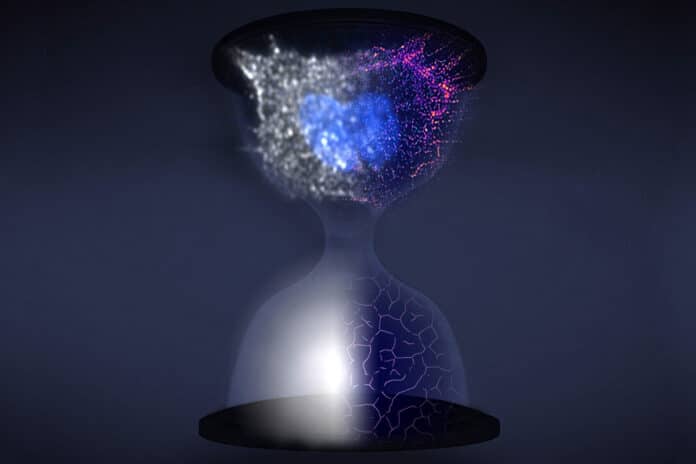Superresolution can reveal structures down to 10 nanometers, or about the same breadth as 100 atoms. It opened a whole new world in biology.
Its drawback is that it can only take photos that last a few seconds. This makes it impossible to track the development of a cell’s machinery over an extended period of time.
Scientists at the University of Michigan have developed a new way to see details smaller than half the wavelength of light. They revealed how nanoscale scaffolding inside cells bridges to the macroscale during cell division.
Unlike the previously developed superresolution methods, this new technique only relies on molecules that wear out with prolonged use. Using their new method, they could continuously monitor a cell for 250 hours.
Guangjie Cui, a Ph.D. student in electrical and computer engineering and co-first author of the study with Yunbo Liu, a Ph.D. graduate in electrical and computer engineering, said, “The living cell is a busy place with proteins bustling here and there. Our superresolution is very attractive for viewing these dynamic activities.”
The new technology employs probes close to the interesting nanoscale objects to illuminate them, similar to the earlier method. Fluorescent molecules emitting an answering light after being illuminated were used for Superresolution 1.0. The image might be recreated from the fluorophores’ light bursts if they were placed close enough to each other relative to the object being scanned.
The new method uses gold nanorods, which are resistant to deterioration from repeated exposure to light, but it is more difficult to use the light that interacts with them. Nanorods respond to the light’s phase, or where it is relative to the electric and magnetic fields that make up its up-and-down oscillation.
Nanorods can bind to specific cell structures, just like fluorophores, thanks to targeting molecules on their surfaces. In this instance, the nanorods looked for actin, a protein that gives soft cells structure. Actin has the appearance of branching filaments, each of which has a diameter of around 7 nanometers (millionths of a millimeter). However, they connect to span thousands of nanometers. The data the nanorods supply collectively can reveal the actin’s minute details, despite the fact that they are frequently more than twice the diameter of the actin.
The scientists created filters using liquid crystals and thin polymer layers to find the nanorods. The team was able to identify nanorods with specific angles to the incoming light because of these filters’ ability to detect light with a specific phase. The team determined the finer characteristics of the filaments inside the cells by capturing 10–30 photos, each focusing on a distinct group of nanorods. In traditional microscopes, these details would be obscured.
Using their technique, scientists found three rules through which actin self-organizes during cell division:
- Actin expands to reach its neighbors when actin filaments are far apart.
- Actin will draw nearer to its neighbors to increase connections, although this tendency is tempered by the drive to expand and reach more neighbors.
- As a result, the actin network tends to contract when it is more connected and will expand when it is less connected.
A cell’s behavior and the behavior of actin are related, but the cell contracts when actin expands and expands when actin contracts. The team is interested in learning more about why the motions are varied at various scales. Additionally, they wish to look into the effects of misregulating this molecular process: Is this the cause of some illnesses?
In a broader sense, they want to employ superresolution to comprehend how biological systems naturally promote self-organization without central management.
Lee said, “Our genetic code doesn’t include enough information to encode every detail of the organization process. We want to explore the mechanisms of collective behaviors without central coordination that are like birds flying in formation—in which interactions between individual parts drive the system.”
Journal Reference:
- Cui, G., Liu, Y., Zu, D. et al. Phase intensity nanoscope (PINE) opens long-time investigation windows of living matter. Nat Commun 14, 4318 (2023). DOI: 10.1038/s41467-023-39624-w
